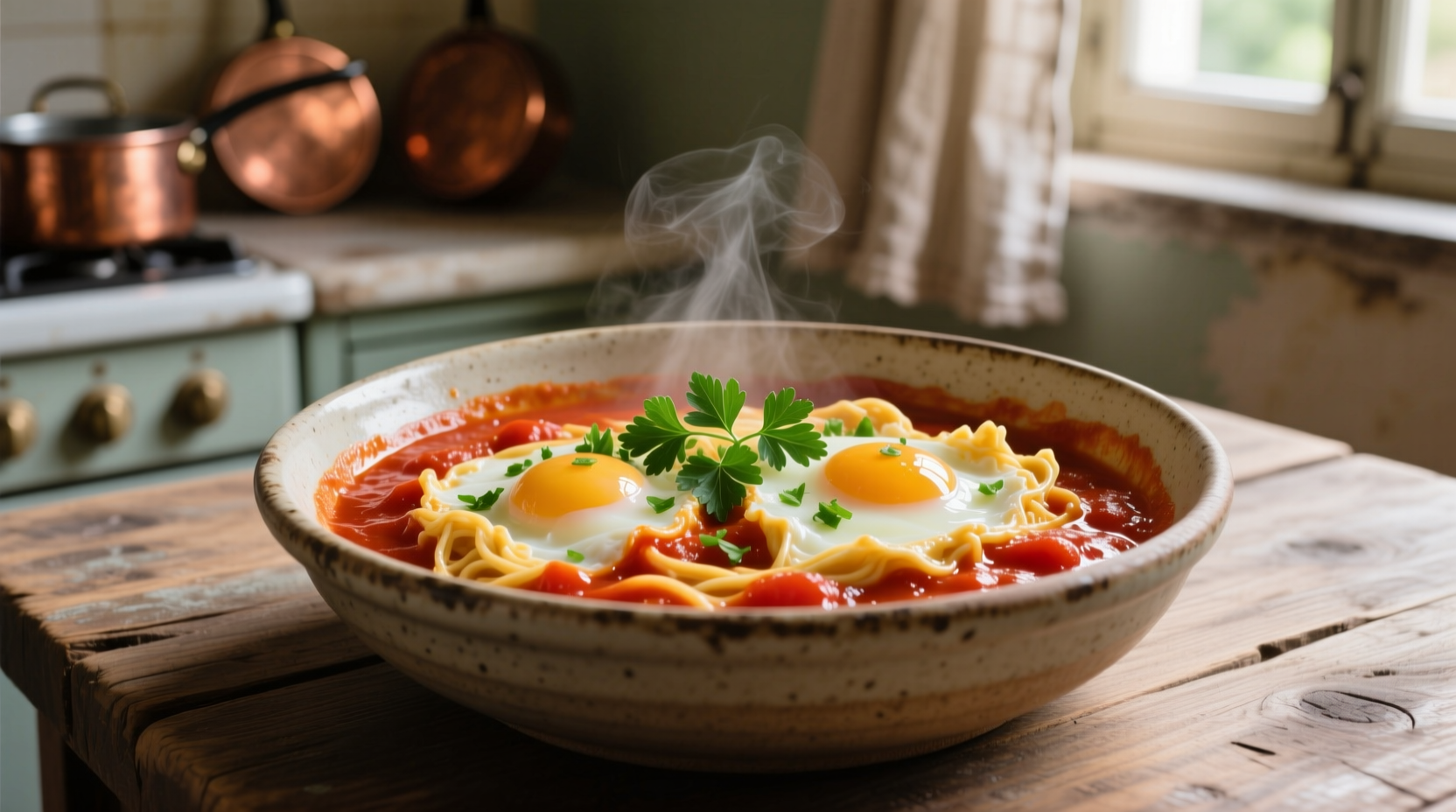Discover how to transform two simple ingredients into a restaurant-quality meal with our comprehensive guide to perfect eggs in tomato sauce. Whether you're looking for a quick weeknight dinner, a hearty brunch option, or a versatile base for creative variations, this guide delivers professional techniques that guarantee success every time.
The Science Behind Perfect Eggs in Tomato Sauce
Understanding why eggs and tomato sauce work so well together begins with flavor chemistry. Tomatoes contain glutamic acid, which creates that satisfying umami taste, while eggs provide rich fats that help carry and enhance these flavors. When combined properly, they create a synergistic effect that's greater than the sum of their parts.
According to culinary research published by the USDA Food Safety and Inspection Service, proper temperature control is critical when cooking eggs in liquid. The ideal simmering temperature for eggs in tomato sauce ranges between 180-190°F (82-88°C), hot enough to set the eggs but not so hot that they become rubbery.
Your Step-by-Step Preparation Guide
Follow this professional method to achieve perfectly cooked eggs every time:
- Prepare your sauce base: Heat 1 cup of quality tomato sauce per egg in a non-stick skillet over medium-low heat
- Create wells: Use the back of a spoon to make small indentations where you'll crack the eggs
- Add eggs carefully: Crack one fresh egg into each well without breaking the yolk
- Cover and simmer: Place lid on skillet and cook for 3-4 minutes for runny yolks
- Check for doneness: Whites should be completely set while yolks remain fluid
- Finish with care: Sprinkle with fresh herbs and a pinch of flaky sea salt just before serving
| Cooking Time | Yolk Consistency | Best For |
|---|---|---|
| 3 minutes | Fully runny | Dipping bread, brunch presentation |
| 4 minutes | Slightly thickened | Everyday meals, better sauce integration |
| 5 minutes | Soft-set | Those preferring less runny yolks |
Avoid These Common Mistakes
Even experienced cooks make these errors when preparing eggs in tomato sauce:
- Using high heat: Causes rubbery eggs and separates the sauce - always use medium-low
- Overcrowding the pan: Prevents even cooking - limit to 2-3 eggs per standard skillet
- Stirring after adding eggs: Breaks the yolks - resist the urge to stir once eggs are in
- Using cold eggs: Creates temperature shock - let eggs come to room temperature first

Global Variations Worth Trying
This simple combination appears in culinary traditions worldwide, each with distinctive characteristics:
- Shakshuka (North Africa/Middle East): Features cumin, paprika, and bell peppers simmered with tomatoes before adding eggs
- Huevos Rancheros (Mexico): Served over tortillas with black beans and fresh salsa
- Uova in Purgatorio (Italy): "Eggs in Purgatory" with garlic, oregano, and a splash of red wine
- Menemen (Turkey): Includes green peppers and sometimes cheese stirred into the tomato base
Food historians note that the combination of eggs and tomatoes only became possible after tomatoes were introduced to Europe from the Americas in the 16th century. According to research from the University of Oxford's Food History Department, it took nearly 200 years for Europeans to accept tomatoes as edible, delaying the creation of this now-classic combination.
Nutritional Benefits You Should Know
One serving of eggs in tomato sauce (2 eggs with 1 cup sauce) provides:
- Approximately 280 calories
- 18g high-quality protein
- Rich in lycopene (enhanced by cooking tomatoes)
- Good source of vitamins A, C, and B12
- Contains healthy fats that aid nutrient absorption
The Harvard T.H. Chan School of Public Health confirms that the combination of healthy fats from eggs with lycopene-rich tomato sauce creates a nutritionally balanced meal that supports heart health when prepared with minimal added oil.
Serving Suggestions for Maximum Enjoyment
Elevate your eggs and tomato sauce with these professional pairing recommendations:
- Bread choices: Crusty artisan bread for dipping, or toasted sourdough for scooping
- Side additions: Simple green salad with lemon vinaigrette balances the richness
- Flavor enhancers: A sprinkle of feta cheese, fresh cilantro, or a drizzle of good olive oil
- Wine pairing: Light-bodied red like Pinot Noir or a crisp white like Sauvignon Blanc
Storage and Reheating Guidelines
While best enjoyed fresh, leftovers can be stored properly:
- Refrigerate within 2 hours of cooking in an airtight container
- Consume within 2 days for optimal quality and safety
- Reheat gently in a skillet over low heat with a splash of water
- Never microwave reheated egg dishes as they become rubbery
Following FDA food safety guidelines, always ensure reheated egg dishes reach an internal temperature of 165°F (74°C) before consumption.
Troubleshooting Common Issues
Encountering problems with your eggs and tomato sauce? Here's how to fix them:
- Sauce too thin: Simmer uncovered for 5-10 minutes to reduce, or add a small amount of tomato paste
- Sauce too acidic: Balance with a pinch of sugar or a small amount of grated carrot
- Eggs breaking apart: Ensure sauce isn't boiling vigorously when adding eggs
- Flavor lacking depth: Add a Parmesan rind while simmering sauce for umami boost











 浙公网安备
33010002000092号
浙公网安备
33010002000092号 浙B2-20120091-4
浙B2-20120091-4